- Choosing and Collecting Seeds
- Preparing the Soil
- Planting Gypsophila Seeds
- 1. Selecting a Planting Location
- 2. Preparing the Soil
- 3. Sowing the Seeds
- 4. Watering and Care
- 5. Germination and Thinning
- 6. Transplanting (Optional)
- 7. Mulching and Fertilizing
- 8. Maintenance and Pruning
- Watering and Fertilizing
- Watering
- Fertilizing
- Pruning and Deadheading
- Pruning
- Deadheading
- Dealing with Pests and Diseases
- Pests
- Diseases
- Harvesting and Storing Gypsophila
- 1. Timing
- 2. Tools
- 3. Cutting Length
- 4. Cutting Technique
- 5. Bunching
- 6. Drying Method
- 7. Storing Fresh Gypsophila
- 8. Handling Care
- 9. Storage Duration
- 10. Commercial Harvest
- Questions and Answers:
- How do I grow gypsophila from seeds?
- When should I plant gypsophila seeds?
- What kind of soil does gypsophila prefer?
- How often should I water gypsophila plants?
- Does gypsophila require full sun?
- How tall does gypsophila grow?
- How long do gypsophila flowers last?
- Videos: Baby’s breath plant – grow & care
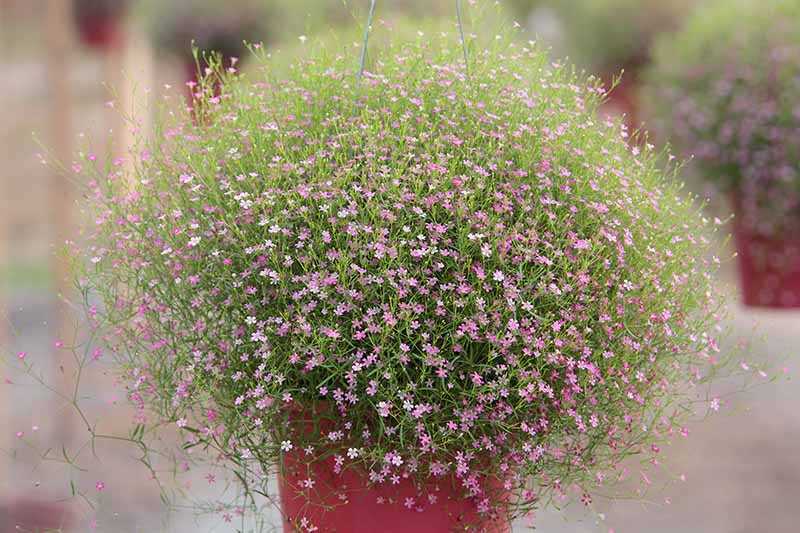
Gypsophila, commonly known as baby’s breath, is a delicate and beautiful flower that is widely used in floral arrangements and bouquets. Its fine white or pink blooms add a touch of elegance and charm to any garden or flower bed. If you’re looking to grow gypsophila from seeds, this guide will provide you with the essential tips and tricks to ensure successful germination and healthy growth.
Choosing the Right Seeds
When it comes to selecting gypsophila seeds, it is important to choose a variety that is suitable for your climate and growing conditions. Gypsophila paniculata is the most common variety and is known for its airy clusters of small flowers. Alternatively, you may opt for Gypsophila elegans, which produces larger blossoms in a range of colors.
Tip: Consider purchasing organic seeds to ensure the highest quality and avoid any potential harmful chemicals.
Sowing the Seeds
Gypsophila seeds should be sown outdoors in early spring or late summer when the soil is cool and moist. Prepare the planting area by removing any weeds and loosening the soil with a garden fork or tiller. Scatter the seeds over the prepared soil and gently press them into the ground. Avoid covering the seeds with soil, as they require light for germination.
Tip: It’s a good idea to sow the seeds in rows or groups to help identify the young gypsophila plants as they begin to grow.
Caring for Gypsophila
Once the gypsophila seeds have germinated, thin the seedlings to allow for proper spacing. The ideal spacing between plants is about 12-18 inches apart. Water the plants regularly, ensuring that the soil remains consistently moist but not waterlogged. Provide adequate sunlight and protect the plants from strong winds, as they can easily be damaged due to their delicate nature.
Tip: Consider adding a layer of mulch around the base of the plants to help retain moisture and suppress weed growth.
By following these tips for growing gypsophila from seeds, you can enjoy the beauty of these delicate flowers in your own garden. Whether you’re looking to create stunning floral arrangements or simply add a touch of elegance to your outdoor space, gypsophila is a wonderful choice that is sure to impress.
Choosing and Collecting Seeds
When it comes to choosing seeds for Gypsophila, there are a few factors to consider. First, decide whether you want to grow the annual or perennial varieties. Annual Gypsophila is perfect for adding color to your garden beds or containers for a single season, while perennial Gypsophila will come back year after year.
Next, consider the specific variety of Gypsophila you want to grow. There are several different types available, including the popular baby’s breath (Gypsophila paniculata) and the smaller-flowered Gypsophila elegans. Take into account factors such as flower size, color, and plant height when making your selection.
When it comes to collecting seeds, wait until the Gypsophila plant has finished flowering and the seed heads have dried out. Carefully cut the seed heads and place them in a paper bag or envelope. Store them in a cool, dry place until you are ready to sow them.
It’s important to note that not all Gypsophila plants will produce viable seeds. Some varieties may be sterile or may not produce seeds that are genetically true to the parent plant. If you’re unsure, it’s best to purchase seeds from a reputable source to ensure quality and germination success.
Preparing the Soil
Before planting gypsophila seeds, it is crucial to prepare the soil properly to ensure healthy growth and abundant blooms. Here are some steps to follow:
- Choose a well-drained location: Gypsophila prefers well-drained soil to prevent waterlogging, which can lead to root rot. Select an area in your garden that offers good drainage, or consider growing gypsophila in raised beds.
- Clear the area: Remove any existing plants, weeds, or debris from the planting area. Gypsophila prefers a clean environment without competition from other plants.
- Loosen the soil: Use a garden fork or tiller to loosen the soil to a depth of at least 6 inches. This will improve the soil’s texture and allow better root penetration.
- Amend the soil: Gypsophila thrives in soil with a neutral to slightly alkaline pH. Test the soil’s pH using a soil testing kit, and if necessary, amend it by adding lime to raise the pH or sulfur to lower it. Follow the instructions on the product packaging for the correct application rate.
- Improve fertility: Gypsophila benefits from fertile soil. Add organic matter, such as compost or well-rotted manure, to enrich the soil with essential nutrients. Work the organic matter into the top few inches of soil.
- Level the soil: Smooth out the soil’s surface using a rake to create an even planting bed. Remove any large clumps or rocks that may hinder seed germination or plant growth.
- Consider mulching: Applying a layer of organic mulch around the gypsophila plants after they have emerged can help conserve moisture, suppress weed growth, and regulate soil temperature. Mulching also adds organic matter to the soil as it breaks down over time.
- Water the soil: Before sowing the gypsophila seeds, water the prepared soil thoroughly to ensure it is evenly moist. This will provide the seeds with the necessary moisture for germination.
Following these steps will help create an ideal growing environment for your gypsophila plants. By preparing the soil properly, you can give your seeds the best chance of germination and ensure healthy growth throughout the season.
Planting Gypsophila Seeds
Planting gypsophila seeds is a relatively simple process that can be done by both novice and experienced gardeners. Here are some tips to help you get started:
1. Selecting a Planting Location
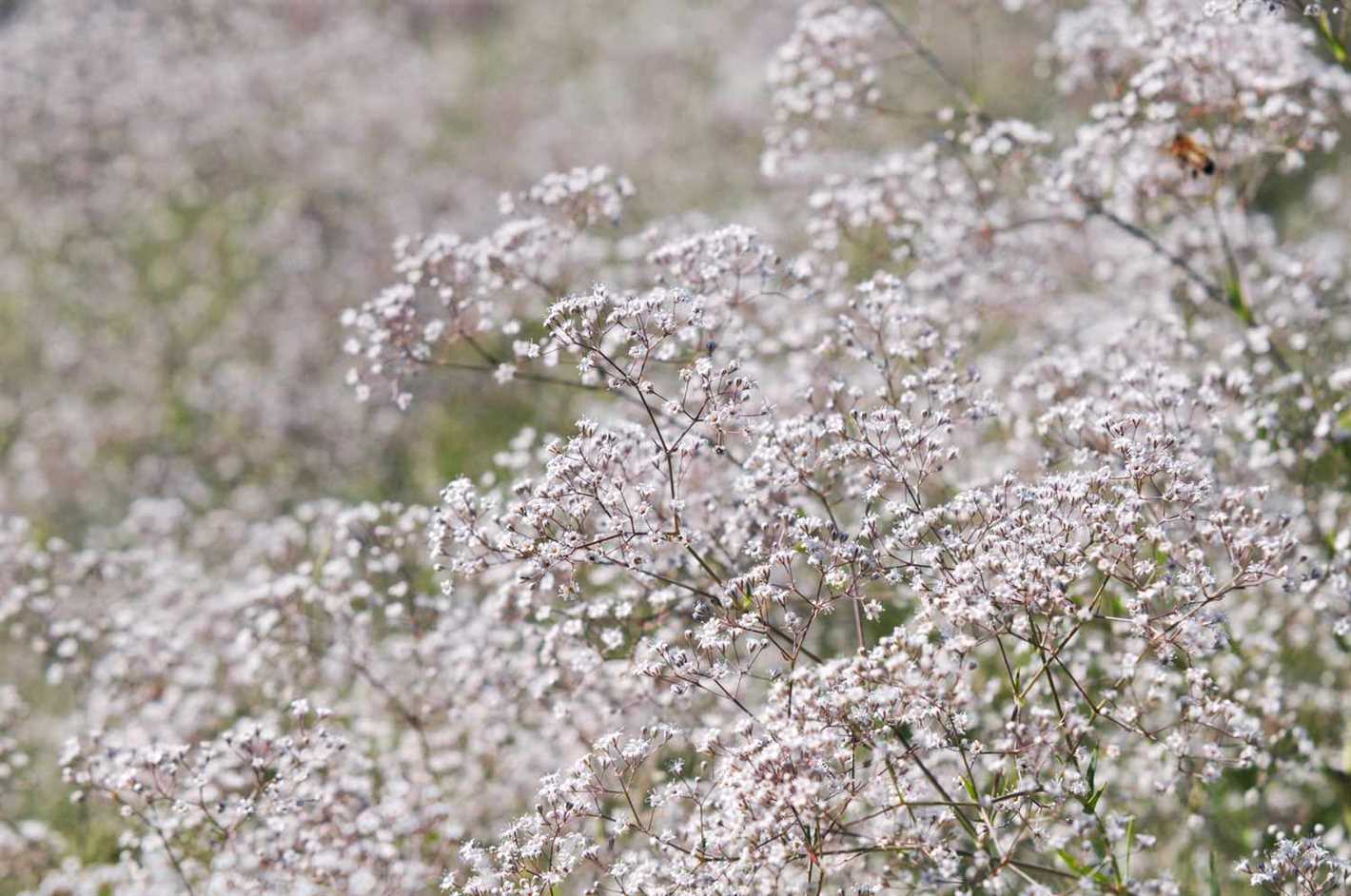

Choose a planting location that receives full sun or partial shade. Gypsophila prefers well-draining soil, so make sure the area has good drainage. You can also consider growing gypsophila in containers or raised beds if your soil is heavy or compacted.
2. Preparing the Soil
Before planting, prepare the soil by removing any weeds or debris. Loosen the soil to a depth of about 6 inches and mix in some organic matter, such as compost or aged manure, to improve soil fertility and drainage.
3. Sowing the Seeds
Gypsophila seeds are small and can be sown directly into the soil. Scatter the seeds evenly over the prepared area, aiming for a spacing of about 6 inches between plants. Lightly press the seeds into the soil, but do not cover them with additional soil, as they require light to germinate.
4. Watering and Care
After sowing the seeds, water the area gently to moisten the soil. Provide regular waterings to keep the soil consistently moist, but not waterlogged. Avoid overwatering, as it can lead to root rot and other issues.
5. Germination and Thinning
Gypsophila seeds typically germinate within 7-14 days. Once the seedlings have emerged, thin them out to allow for proper spacing. Keep the healthiest and strongest seedlings and remove any weak or overcrowded plants.
6. Transplanting (Optional)
If you started your gypsophila seeds indoors or in containers, you can transplant them outdoors once they have reached a suitable size. Be sure to harden off the seedlings by gradually exposing them to outdoor conditions before planting in their permanent location.
7. Mulching and Fertilizing
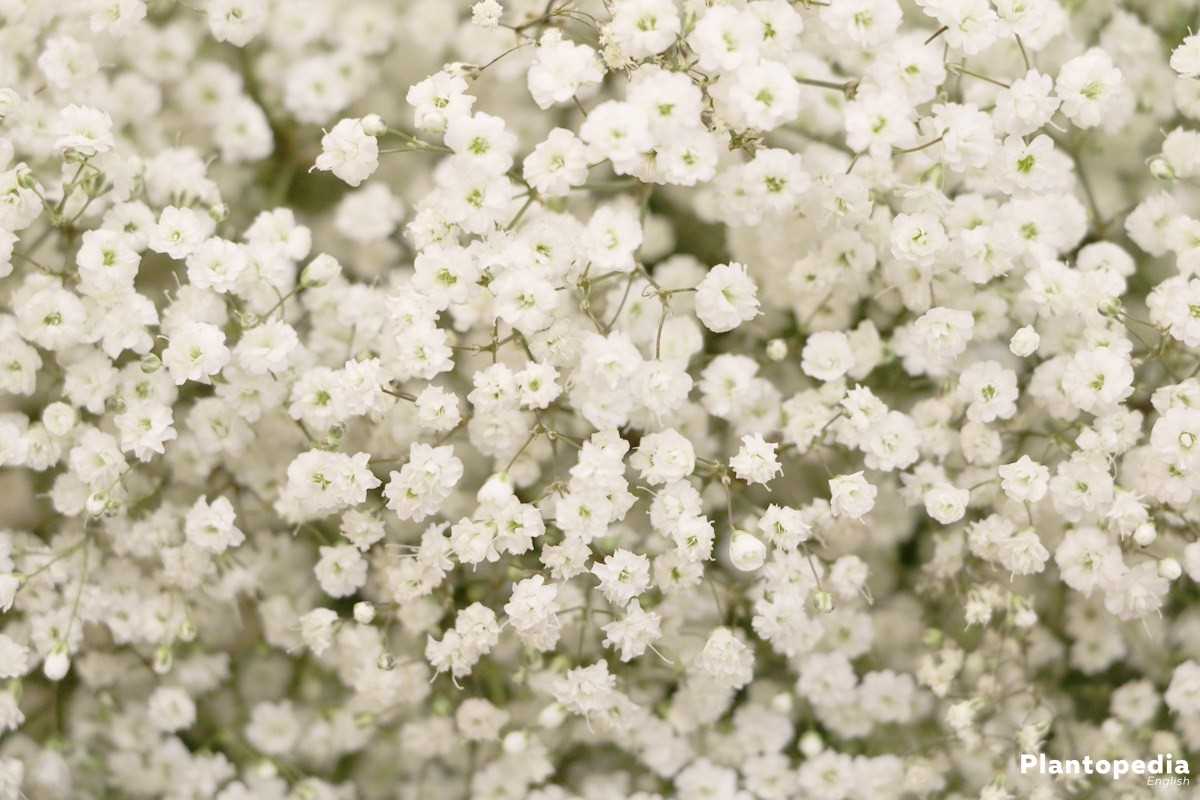

After planting, you can apply a layer of organic mulch around the base of the plants to help conserve moisture and suppress weeds. Additionally, you can fertilize gypsophila plants with a balanced, slow-release fertilizer according to the manufacturer’s instructions.
8. Maintenance and Pruning
Once your gypsophila plants have established, they require minimal maintenance. Regularly remove any weeds that may compete with the plants for nutrients and water. You can also prune the plants after they have finished blooming to promote bushier growth and extend their flowering period.
Following these steps should help you successfully plant gypsophila seeds and grow beautiful, delicate flowers in your garden or containers.
Watering and Fertilizing
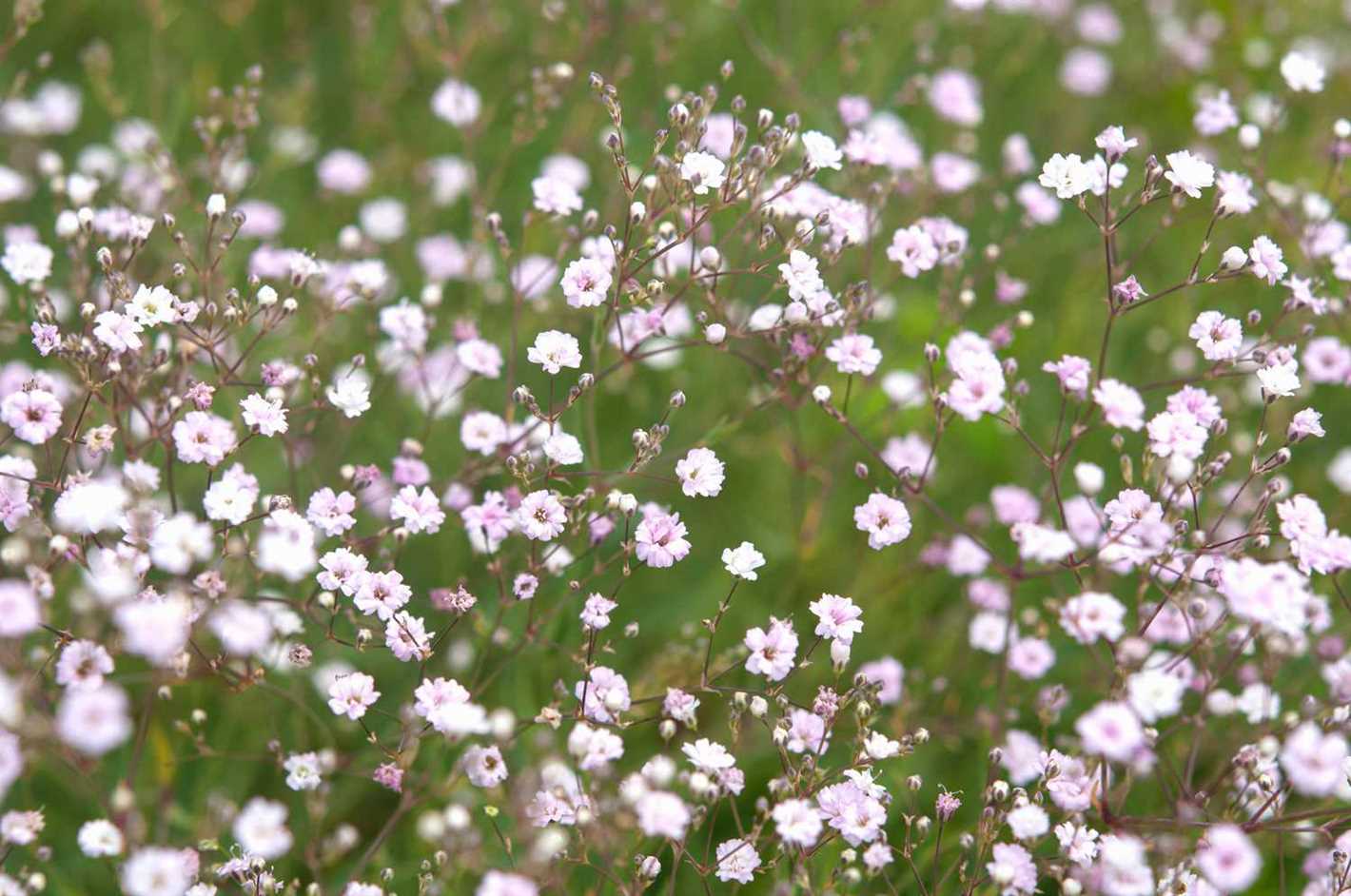

Gypsophila, also known as baby’s breath, is a hardy plant that requires minimal maintenance. However, proper watering and fertilizing are essential for its growth and health. Here are some tips on how to water and fertilize your gypsophila plants:
Watering
Gypsophila plants prefer well-draining soil and should be watered moderately. Over-watering can lead to root rot, while under-watering can cause the plant to wither and die.
- Water the plants deeply once a week, allowing the water to reach the root zone.
- Check the moisture level of the soil before watering. If the top inch of soil feels dry, it’s time to water.
- Avoid overhead watering as it can encourage fungal diseases. Instead, water at the base of the plant.
- During hot, dry weather, you may need to increase the frequency of watering. However, make sure not to over-water.
Fertilizing
Gypsophila plants don’t require much fertilizer, but a well-balanced application can help promote healthy growth and blooming.
- Apply a slow-release fertilizer with a balanced NPK ratio (such as 10-10-10) in early spring when new growth appears.
- Follow the manufacturer’s instructions for the correct amount and method of application.
- Alternatively, you can use a liquid fertilizer diluted to half strength every 4-6 weeks during the growing season.
- Avoid over-fertilizing, as it can lead to excessive foliage growth and reduced flower production.
By following these watering and fertilizing tips, you can ensure that your gypsophila plants thrive and provide you with beautiful blooms throughout the growing season.
Pruning and Deadheading
Pruning and deadheading are important tasks to ensure the health and appearance of your gypsophila plants. These practices help promote new growth, control their size, and prolong their flowering period.
Pruning
Pruning gypsophila involves cutting back the plant to remove any dead or damaged stems, as well as to shape and maintain its size. It is best to prune your gypsophila in the early spring before new growth begins.
To prune, use a sharp pair of pruning shears and cut back about one-third of the plant’s overall height. Make the cut just above a pair of healthy leaves or nodes. This will promote new growth and encourage a more compact and bushy plant.
Regular pruning will also help prevent gypsophila from becoming woody and leggy, which can diminish its overall appearance.
Deadheading
Deadheading is the process of removing faded or spent flowers from the plant. This practice not only keeps the plant looking tidy but also redirects energy towards new growth and prolongs the flowering period.
To deadhead gypsophila, inspect the plant regularly and remove any faded flowers by pinching or cutting off the stems just above a pair of healthy leaves or nodes. Be careful not to remove any developing buds or new growth.
If your gypsophila is a perennial variety, deadheading can encourage the plant to produce more flowers throughout the season. However, if it is an annual variety, deadheading may not be as necessary as the plant will typically flower and complete its life cycle within one season.
Deadheading gypsophila is a simple and satisfying task that can be done throughout the growing season as needed.
Dealing with Pests and Diseases
Gypsophila plants are generally resistant to pests and diseases. However, there are still a few problems that may occur. Here are some common pests and diseases that you may encounter while growing Gypsophila:
Pests
- Aphids: These tiny insects can infest Gypsophila plants, sucking the sap from the leaves and causing them to wilt and curl. To control aphids, you can spray the affected plants with a mixture of water and insecticidal soap or use ladybugs, which are natural predators of aphids.
- Spider mites: These tiny arachnids can cause damage to Gypsophila plants by piercing the leaves and sucking out the sap. You can control spider mites by spraying the plants with a mixture of water and insecticidal soap or by introducing predatory mites.
- Snails and slugs: These mollusks can eat the leaves and stems of Gypsophila plants, leaving behind large holes. To control snails and slugs, you can handpick them from the plants or place beer traps near the affected areas.
Diseases
- Powdery mildew: This fungal disease appears as a white, powdery substance on the leaves of Gypsophila plants. To prevent powdery mildew, ensure good air circulation around the plants and avoid overwatering. If the disease occurs, you can treat it with fungicides specifically designed for powdery mildew.
- Root rot: Overwatering or poorly drained soil can lead to root rot in Gypsophila plants. To prevent root rot, make sure the soil is well-draining and avoid overwatering. If root rot occurs, you may need to replant the affected plants in fresh, well-draining soil.
Regularly inspecting your Gypsophila plants for signs of pests or diseases and taking prompt action can help ensure their health and overall success in your garden.
Harvesting and Storing Gypsophila
Once your gypsophila plants are in full bloom and the flowers have opened, it’s time to start harvesting them. Here are some tips for harvesting and storing gypsophila:
1. Timing
Harvest gypsophila flowers in the morning, after the dew has dried but before the heat of the day sets in. This is when the flowers are at their freshest and will last the longest in storage.
2. Tools
Use a pair of sharp gardening shears or scissors to cut the gypsophila stems. Make sure they are clean and sterile to prevent any potential diseases from being spread.
3. Cutting Length
When harvesting gypsophila, cut the stems at a length of about 12 inches (30 cm) or longer. This will provide you with enough stem length to work with when arranging the flowers.
4. Cutting Technique
Make a clean, diagonal cut just above a leaf node or bud. This will encourage the plant to produce new growth and more flowers.
5. Bunching
After cutting the gypsophila stems, gather several together and secure them with a rubber band or a piece of twine. This will make it easier to handle and transport the flowers.
6. Drying Method
If you want to dry gypsophila for use in dried flower arrangements, hang the bunches upside down in a dry and dark area. Allow them to air dry for several weeks until they are crispy and fully dry.
7. Storing Fresh Gypsophila
If you want to store fresh gypsophila for use in fresh flower arrangements, place the bunches in a bucket of clean water. Keep them in a cool location away from direct sunlight until you are ready to use them.
8. Handling Care
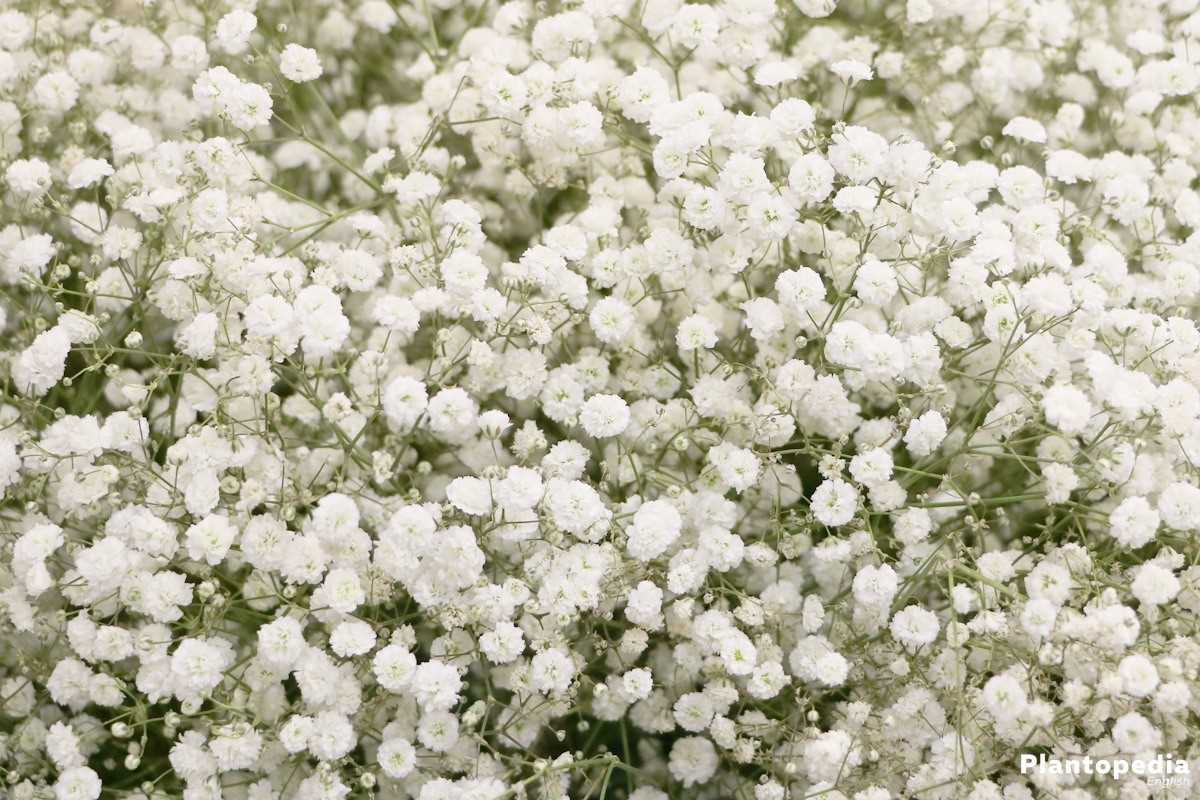

When handling gypsophila, be gentle and avoid squeezing or crushing the delicate flowers and petals. This will help to preserve their shape and appearance.
9. Storage Duration
Fresh gypsophila can be stored in water for up to a week. If you want to extend their longevity, you can also use a flower preservative in the water to nourish and prolong their freshness.
10. Commercial Harvest
If you are growing gypsophila for commercial purposes, it is best to harvest the flowers when they are just starting to open. This is when they are most marketable and will provide a longer vase life for the end customer.
By following these tips, you can enjoy the beauty of gypsophila in fresh or dried flower arrangements for an extended period of time.
Questions and Answers:
How do I grow gypsophila from seeds?
To grow gypsophila from seeds, start by sowing the seeds indoors about 8-10 weeks before the last frost date. Use a well-draining potting mix and sprinkle the seeds evenly on the surface. Lightly press the seeds into the soil and mist with water. Place the pots in a warm and bright location, and keep the soil moist but not soggy. The seeds should germinate within 7-14 days. Once the seedlings have grown a few inches tall, transplant them into individual pots or into the garden after the danger of frost has passed.
When should I plant gypsophila seeds?
You should plant gypsophila seeds indoors about 8-10 weeks before the last frost date in your area. This will give the seeds enough time to germinate and grow into seedlings before the outdoor planting season begins. Transplant the seedlings into the garden after the danger of frost has passed and the soil has warmed up. If you prefer to sow the seeds directly in the garden, wait until the soil has warmed up and there is no longer a risk of frost.
What kind of soil does gypsophila prefer?
Gypsophila prefers well-draining soil that is rich in organic matter. A sandy loam soil is ideal for gypsophila, as it allows the water to drain freely and prevents the roots from becoming waterlogged. If your soil is heavy clay or compacted, add organic matter such as compost or well-rotted manure to improve the drainage. Gypsophila can tolerate a wide range of soil pH, but neutral to slightly alkaline soil is preferable.
How often should I water gypsophila plants?
Gypsophila plants should be watered regularly, especially during hot and dry periods. However, it’s important not to overwater them, as this can cause root rot. Water the plants deeply, allowing the soil to dry out slightly between waterings. The frequency of watering will depend on the climate and soil conditions. In general, aim to keep the soil evenly moist but not waterlogged.
Does gypsophila require full sun?
Yes, gypsophila thrives in full sun. It requires at least 6-8 hours of direct sunlight per day to grow and flower properly. Placing gypsophila in a shaded or partially shaded area may result in leggy growth and fewer flowers. When choosing a location for planting gypsophila, make sure it receives ample sunlight throughout the day.
How tall does gypsophila grow?
Gypsophila plants can vary in height depending on the variety. Most gypsophila cultivars grow to a height of 1-3 feet (30-90 cm). However, there are dwarf varieties available that grow only 6-12 inches (15-30 cm) tall. Be sure to choose the appropriate variety for your garden or container, keeping in mind the desired height and overall aesthetic.
How long do gypsophila flowers last?
Gypsophila flowers have a relatively long vase life. When cut and placed in water, they can last up to two weeks. The small, delicate flowers of gypsophila are often used as filler in floral arrangements to add texture and volume. With proper care and regular water changes, you can enjoy the beauty of gypsophila flowers for an extended period of time.







